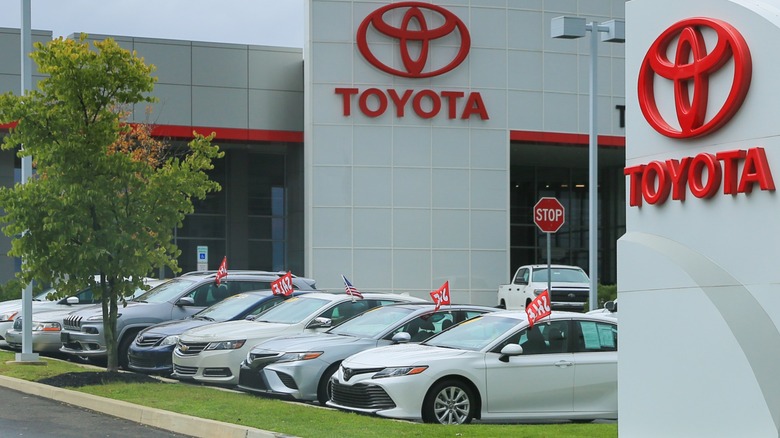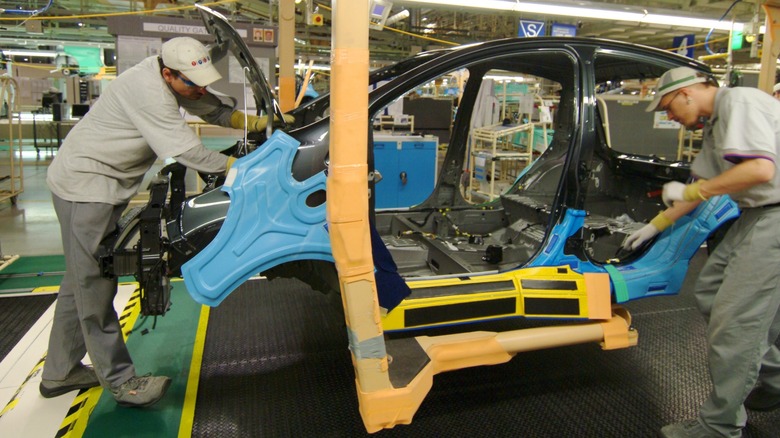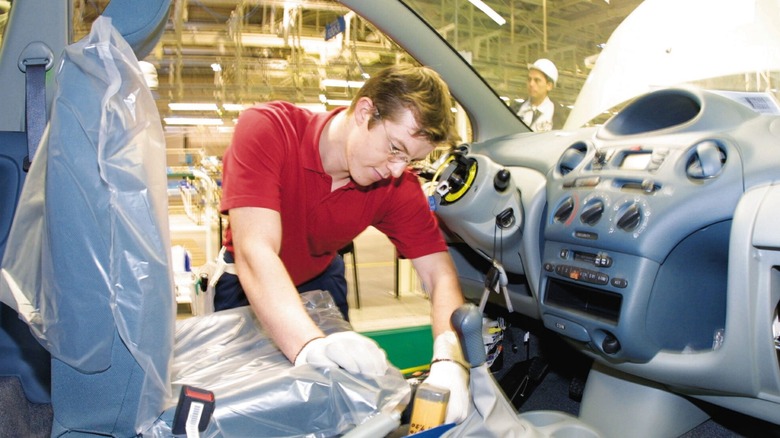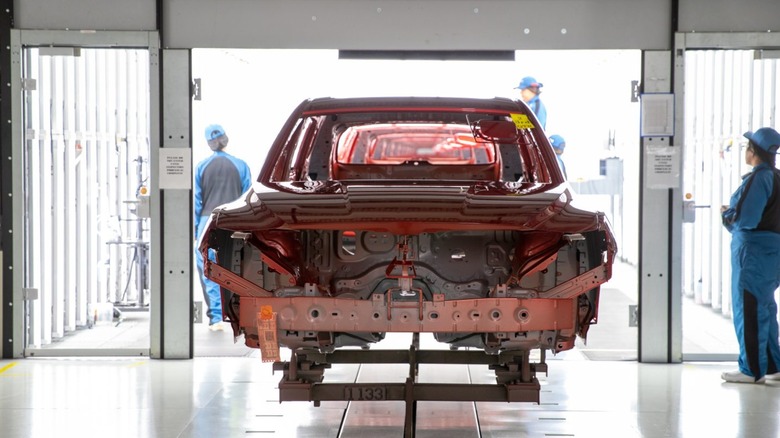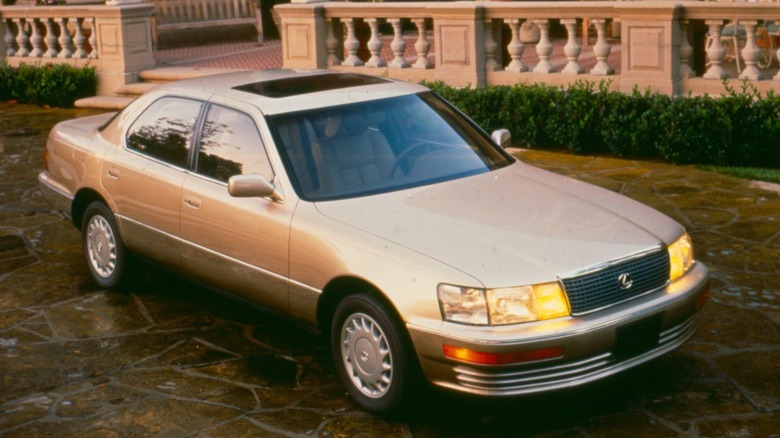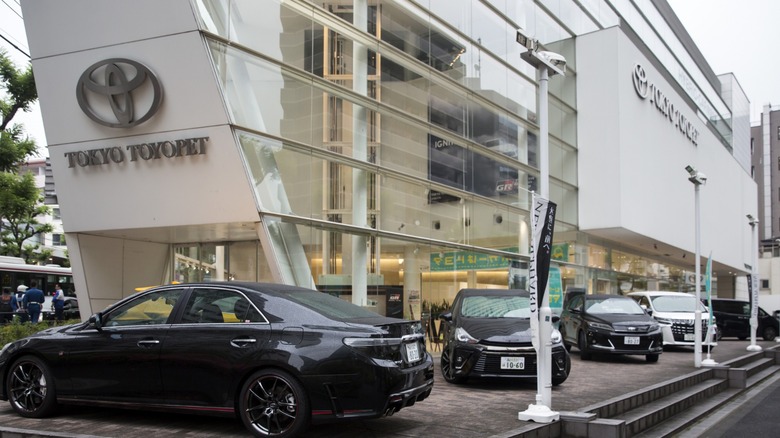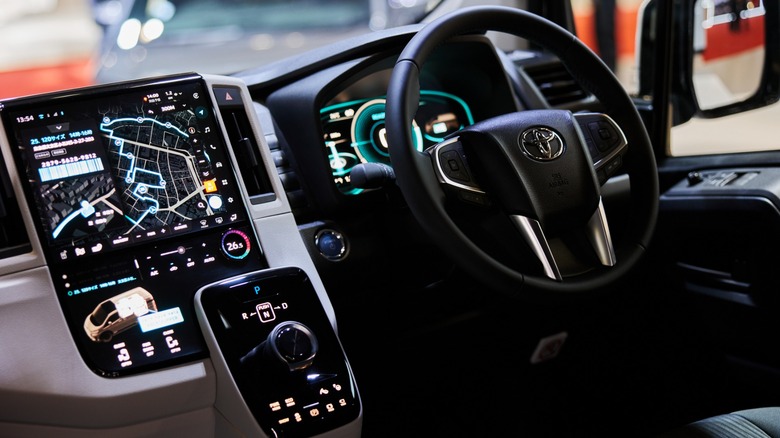10 Reasons Why Toyotas Are So Reliable
In the late 19th Century, a Japanese inventor named Sakichi Toyoda created an automatic loom and set up a company working with textiles. While he may have been an inventive and clever entrepreneur, he likely had no idea his company would go on to be among the largest corporations in the world, building and shipping cars to every continent, including Antarctica. The path from regional textile company to world leader in automobiles was slow at first, but the economic conditions of post-war Japan set the stage for rapid expansion.
As of 2022, Toyota manufactures more cars than all but one other automaker and has a presence in every country, selling cars through a network of 172 distributors. The company is known for a wide range of vehicles, from its best-selling and long-running Corolla to its master of desert and savannah, the Land Cruiser. Furthermore, while the company was once known for making simple, small, and fuel-efficient vehicles in the '70s and '80s, Toyota launched its Lexus brand in 1989, proving the Japanese could build luxury automobiles every bit as good as the Europeans, if not better. One of the hallmarks of Toyota products has always been their high level of reliability, and as recently as 2023, Consumer Reports lists the top two most reliable brands as Toyota and Lexus. While most people likely have some knowledge about Toyota's legendary reliability, not everyone knows exactly why. Therefore, here are the reasons why Toyota vehicles are so reliable.
W. Edwards Deming
Rapid changes in the automobile industry were underway in the time after WWII. Automakers were in a good position to take advantage of high consumer demand and fulfill it with a plethora of automobile choices. However, meeting demand did not necessarily mean companies met it with good quality. Dr. W. Edwards Deming, a professor of statistics, knew how automakers could improve quality and manufacturing processes and went to Detroit to offer his services, only to be ignored and rejected. The entrenched, top-down management style of American automakers was not open to new outside ideas. That's when Deming traveled to Japan, where fledgling automakers rebuilding their country eagerly embraced his ideas, particularly Toyota.
Deming went to Toyota in 1950 to find a company that was struggling to stay afloat but eager for his advice. As he met with top managers, he conveyed his ideas on how to make a successful manufacturing operation, to which Toyota management was receptive. While his ideas were wide-ranging, the overall focus was in bringing together all parts of the operation to work together as a team, including factory workers, suppliers, and management. Deming also believed that the workers needed to be treated as associates who deserved recognition and the ability to provide input rather than expendable tools.
With Deming's suggestions incorporated, Toyota became a leader in the industry. Only in the 1980s did American manufacturers finally see the value of Deming's ideas and, finally, hire him to straighten out the mess that was Detroit.
Toyota Production System
At the core of all Toyota manufacturing is its Toyota Production System (TPS). What developed into the TPS originated with the early Toyoda looms and evolved as the company grew and expanded into different markets. This system is built upon a foundation of 13 pillars. Toyota's reliance on and consistent application of these pillars shines through in its products.
Most of the pillars are common sense concepts that are often overlooked by modern companies but work well for Toyota. Poka-Yoke is to avoid mistakes. Hansei means there is a process to learn from mistakes. Jidoka is automation with human intelligence, incorporating the human element into all machine automation. Heijunka ensures the correct number of parts are ready to build a product and Toyota sequences production to achieve this efficiently. Genchi Genbutsu indicates the best way to solve a problem is to see it first-hand. It encourages managers to be present on the factory floor to engage with production when needed. Nemawashi is teamwork, and decisions based on collective action make for harmonious teams. Genba is where work is performed and management is encouraged to make "Genba Walks" regularly to be involved with their teams and be present to receive ideas for improvement.
These are some of the pillars of the TPS, and it is perhaps Kaizen that stands above the rest. Combining Japanese words for "change" and "for the better," Kaizen is the concept that Toyota should always strive for improvement, whether increasing efficiency, cutting down on waste, or establishing better relationships with stakeholders.
Total Quality Management
While TPS sets up Toyota factories for success, it is its Total Quality Management (TQM) that ensures it. The concept of TQM is not unique to Toyota but its implementation is a model of success. The fundamentals of TQM are built on a process of recognizing errors in manufacturing to reduce or eliminate them. It is continual and all-encompassing, and concepts implemented in the TPS crossover into its TQM. Ultimately, TQM is meant to improve the final product concurrently with providing high levels of customer service and optimizing supply chains to keep inputs of good quality on hand at the time they are needed.
An integral part of the TPS is just-in-time manufacturing, which Toyota pioneered. This concept is the practice of keeping materials and supplies in inventory in sufficient quantities to keep assembly lines running, and no more. Furthermore, Toyota sets the desired quality level based on customer expectations, builds that into its manufacturing process, and continually monitors and improves upon it. To achieve and maintain high production quality, Toyota empowers its employees at all levels to take part and values the input of everyone, no matter how high or low they are within the company's hierarchy.
Toyota also implemented the Andon cord, which any worker can pull to stop the assembly line to provide input and rectify a problem before it goes any further into finished products. American companies, with management distrustful of labor, failed to recognize its value for decades and fell behind Toyota on quality.
Toyota Product Development System
Long before a chassis is assembled or a cylinder head is installed, everything must be created in the design process. Toyota quality is also built into its Product Development System (TPDS) by ensuring the best possible components can be built and its designs have the quality of the finished product baked in from the start. TPDS incorporates 13 principles divided into three categories — Process, People, and Tools & Technology.
Process establishes what products to deliver based on the actual desires of the customer. All options are explored to deliver that product, while standardizing as many facets of the process as possible. Placing the right people in charge of development ensures good outcomes. Hiring competent people is an important step, as is building on their expertise as a part of the whole. Bringing suppliers into the discussion also helps to streamline the process while maintaining a culture in which individuals are valued for their efforts, bringing harmony across the board. Development further integrates the tools used to support personnel.
Toyota achieves quality through integrated development with the proper goals in mind, providing staff with visual aids to clearly define the process. Toyota's mizen bouchi, meaning designed-in quality, fully integrates many small techniques that add up to reliability in the finished product.
Premium engineering
In creating the best products possible while baking in the highest degree of reliability, everything must begin with the engineering. Toyota hires skilled engineers and puts them to work designing engines that will work well and run with longevity. To assess how this is accomplished, it might be helpful to look into the development of two of the company's favorite engines.
When Toyota set out to create a luxury car that could compete with established European brands, management knew they had to bring a product that exceeded the competition and paid particular attention to its V8 engine. The Lexus 1UZ-FE V8 features many overbuilt components to keep it from being stressed at all. Toyota built 900 experimental engines, with no budget limit, and made it not only strong but also incredibly smooth. A wine glass full of water on a running engine will barely see a ripple, even with the throttle applied.
In the same era, Toyota built its now-legendary Supra sports car with an also legendary straight-6 engine. In the MK4 Supra, this twin-turbo banger produces up to 320 horsepower but can handle much more. The cast iron closed-deck block is way overbuilt to the point that it can withstand 800 horsepower on the stock internals. With some upgrades, many have managed an output of well over 1,000. These may only be two of many engines made by Toyota, but it shows the company can engineer products capable of handling way more than is ever demanded of them in stock form.
Toyota sales strategy
Most people might not think much about sales strategy regarding the reliability of a Toyota, but it ties into manufacturing in the way that Toyota's goals are aligned throughout the entire product cycle. If you are going to build a car with the customer's desires in mind, how to market and sell that car to prospective customers matters.
A couple of factors important to Toyota marketing include its global reach, selling into 170 countries while offering a diverse product mix of cars, trucks, and SUVs. Furthermore, Toyota has always been placed as a value leader, offering cars with affordability in mind, with the exception of its premium Lexus brand, which is positioned for a different buyer altogether. While Toyota uses emotion to draw buyers in with its marketing campaigns, its reliability is depicted in a way that conveys stability and keeps buyers coming back. Once they sell someone their first Toyota, a good experience with the product will hook them for their second Toyota.
Quality supply chain
Toyota factories can produce cars to the highest standard, day in and day out, for as long as they want, but if the components used in those products are faulty, so will the finished product be. Toyota understands the importance of developing relationships with its suppliers to streamline the assembly process, but also to ensure the parts it receives are built to a consistent standard.
A few components of the TPS speak to ensuring its suppliers provide the best possible parts. With its well-established relationships, there can be dialogue to work out issues with a harmonious resolution that is mutually beneficial. Furthermore, the global supply chain is managed for efficiency, which can ease the stress on suppliers and give them breathing room to work on manufacturing quality components. Initiatives implemented for rigorous inspections of suppliers provide feedback to Toyota, preventing faulty components from entering the supply chain and preventing serious issues from developing.
Without its suppliers, Toyota could not exist. By integrating them into the overall production with effective oversight, the company can continue to offer its cars knowing its customers will be satisfied and choose Toyota again and again.
Testing
While Toyota has a good reputation for building reliable products, it was not earned accidentally. It exists partially due to rigorous testing that takes place before products leave the factories. Setting up efficient production is all well and good, but testing lets you know it is worth the effort.
Toyota Genuine Parts, which are installed at the factory and what you can buy from the parts department, are tested to rigorous standards in the lab and must pass six stringent tests to be deemed satisfactory for Toyota standards. Engine parts are checked for variations and a tight fit and a failed part can result in an entire batch being rejected, while the machine making them will be recalibrated. Pistons are randomly X-rayed to check the protective coating. Dashboards are subjected to extreme heat and cold. Engines must endure 200,000 trips to redline, simulating the abuse of 10 years of hard taxi driving. Power windows have to endure a "10-year" test, and windshield wipers have to make it through 1.5 million wipes.
After all this individual testing of components, each car is thoroughly examined and put through a battery of tests to ensure the car you buy from a Toyota dealer lives up to Toyota standards. The continued testing and inspections prevent problems from making it out of the factory.
Careful innovation
While you may not find any official literature from Toyota proclaiming its cautious approach to innovation, in its practices and implementation of new products, it becomes clear.
The paradox of Toyota is that it is a company that offers much in the way of innovative products. It pioneered the hybrid vehicle, being the first to bring a widely adopted model to the market. Yet, it has been reluctant to embrace full electrification and is entering the space very slowly. This is also true with developments in autonomous driving technology. Toyota is studying the concept but waiting to implement it. In waiting to adopt some new technologies, Toyota knows that its profitability will be stronger in the long term. Avoiding bringing innovation to market prematurely prevents having disastrous results when it proves not to be ready, or when it causes harm to drivers. Toyota knows it can rely on its already proven products to continue serving buyers until new developments have been thoroughly proven.
The Toyota Way
If there is anything that guides Toyota in an all-encompassing and overarching manner, it is The Toyota Way. This is a company philosophy and general guide that spells out the company's raison d'etre and has become so well-known and well-developed that books have been written explaining it.
The Toyota Way rests on a foundation of 14 principles that convey its management philosophy. Many of these principles are the same things that underpin the Toyota Production System and guide the manufacturing of high-quality automobiles. Each of these pillars falls under one of two categories, continuous improvement and respect for people. When a company values everyone involved in the organization and seeks to improve its processes and products, you can expect good results. This is emphasized in the principles that direct the company to respect its extended network and to foster leadership that can teach these ideas to others. Other principles include making deliberate decisions based on consensus, and standardizing processes, tasks, and components.
While The Toyota Way is an evolving concept that the company adjusts to the changing operating environment, its principles remain constant. Furthermore, its emphasis on integrity and fair dealings with people will continue to set Toyota apart and be responsible for its undeniably reliable products.
